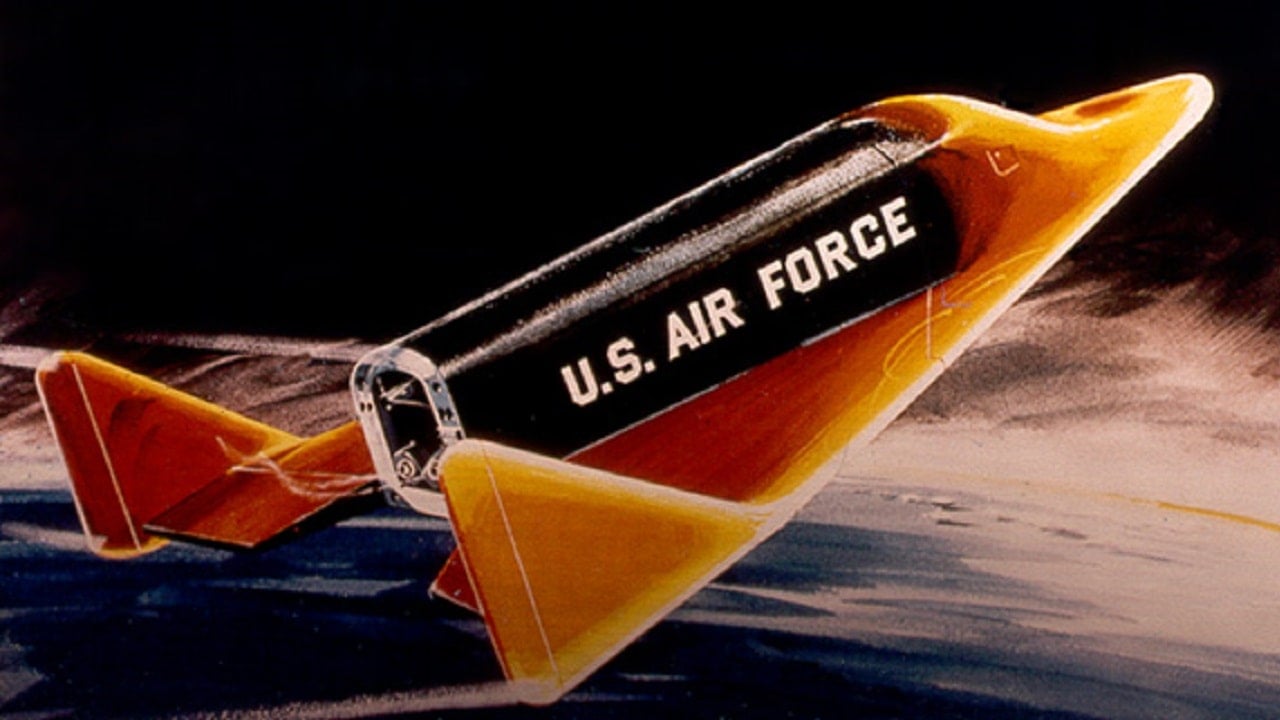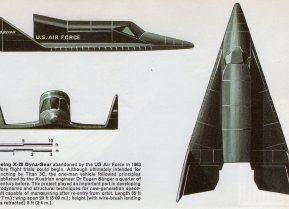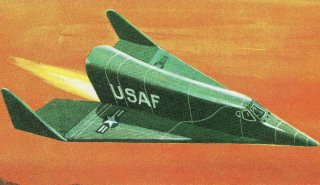X-20: NASA Had Plans for a Space Plane That Could Go 17,500 MPH
The X-20 was not the Air Force’s only experimental aircraft designed to cross into outer space. The Air Force operated an X-plane that broke the threshold of space: the X-15, of which pilots including Neil Armstrong used to fly into space, earning their astronaut wings.
X-20 Dyna-Soar - The debate over how American astronauts will travel to space has long been settled. As the last sixty years of American space travel demonstrate, NASA uses rockets to launch their space vehicles – typically a capsule, occasionally a shuttle – into space.
Few have a living memory of a time when interested parties actively debated the methods by which Americans would travel to space; that a rocket would be the default launch vehicle is now accepted as dogma – but there was a time when the U.S. was seriously considering flying to space. The U.S. Air Force even had an airframe designed to bring astronauts to space, with powered flight, in a manner more dignified than a Spam-in-a-Can-style rocket/capsule launch. The vehicle: the Boeing X-20 Dyna-Soar.
Making Space Flight a Reality
The X-20 was not the Air Force’s only experimental aircraft designed to cross into outer space. The Air Force operated an X-plane that broke the threshold of space: the X-15, of which pilots including Neil Armstrong used to fly into space, earning their astronaut wings.
The X-20 was meant to expand upon what the X-15 had accomplished; the X-20 was intended to perform an expansive mission profile, including space rescue, space interceptor, high-altitude recon, satellite maintenance, and satellite-killing.
Yet, the X-20 never accomplished any of these missions. The X-20 was never built.
While the X-20 was never built – and obviously never came close to flying – the X-20 was a real program and a real investment in the future of space travel. From October 1957 until December 1963, the U.S. invested $660 million in the Dyna-Soar – that’s $5.58 billion in 2022 dollars – all for a concept, essentially a set of blueprints.
The X-20 program’s origins lie in Nazi Germany. After World War II, the top-secret U.S. program, known as Operation Paperclip, gathered Nazi Germany’s most talented scientists and brought them to work for the U.S.
The Nazis had already been working on a hypersonic plane that could be launched from Europe to bomb the U.S. before landing in Imperial Japan. The Nazi hypersonic bomber never took flight but the idea was the seed of the X-20 program.

Early Space Flight
While the earliest space flight programs – Mercury, Gemini, Apollo – and the latest space flight program – Artemis, Dragon – rely on capsules to transport astronauts, the X-20 was simply flown like an aircraft. The design called for a tailless, low-slung delta-winged configuration with a cockpit for one pilot.
Like all the capsule-style devices, the X-20 would launch aboard a rocket – before detaching and flying under the X-20’s own power.
The X-20 would even return to Earth under its own power; whereas capsule programs would reenter the atmosphere and then deploy a parachute, the X-20 would glide into a graceful landing, on a runway like any other airplane.
Although the X-20 was not approximately the same as other airplanes – the X-20 featured retractable wire-bush skids in lieu of proper landing gears. The skids were necessary: rubber landing gears would have incinerated upon re-entry in the earth’s atmosphere.
In flight, the X-20 would rely on two rocket engines, reaching speeds of 17,500 miles per hour and altitudes of 530,000 feet. The speed and altitude envelope within which the X-20 was to operate required a batch of skilled pilots at the controls.
The program even got as far as selecting a group of pilots deemed capable to fly the X-20. In April 1960, seven pilots were secretly chosen from the astronaut corps to join the X-20 team. Most notable among them: Neil Armstrong. Armstrong never got a chance to fly the X-20, obviously. No one did.
The space plane was never built. Armstrong’s consolation was being the first man to step onto the lunar surface, after he piloted his Landing Module, Eagle, to a safe landing on Mare Tranquillitatis.
The Dyna-Soar is often remembered as an expensive tangent, a drain of valuable time and money. But the X-20 program did generate valuable insights into space travel. In fact, the X-20 is the direct ancestor of the Space Shuttle program – which is generally considered the most complex machine humans have ever built.
Harrison Kass is a prolific defense and national security writer. An attorney, pilot, guitarist, and minor pro hockey player, he joined the US Air Force as a Pilot Trainee but was medically discharged. Harrison holds a BA from Lake Forest College, a JD from the University of Oregon, and an MA from New York University. He lives in Oregon and listens to Dokken. Follow him on Twitter @harrison_kass.
All Images are Creative Commons.


